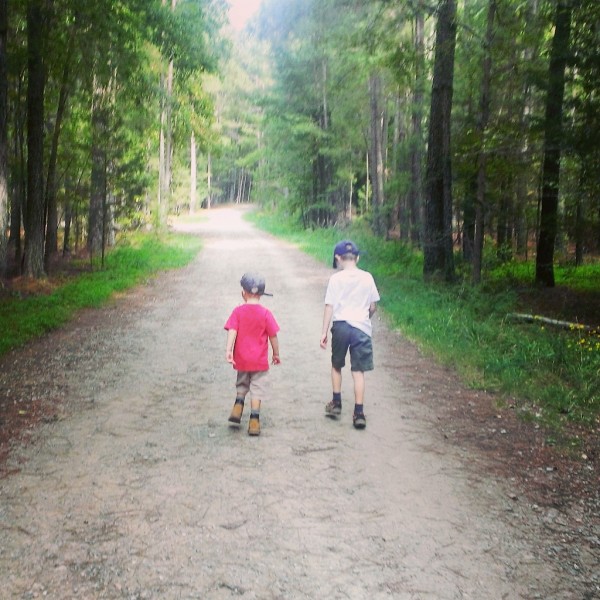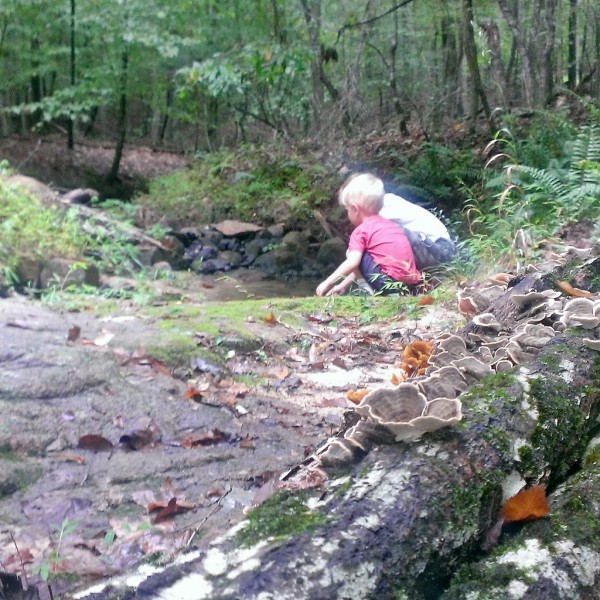They get bored. Honestly, kids simply get bored on a family hike, or a walk along a nature path, or while exploring a new park (that doesn’t have a playground). It is important to do all these things as a family, but the whining and complaining hurts. In a society where our kids are inundated with technological entertainment all the time, they get bored outside.
But my husband and I believe in an active family. We want them to see birds and squirrels and discover the natural beauty of the world. But we found we couldn’t take that complaining.
Then, we hit on the jackpot idea: geocaching.
Geocaching is a worldwide treasure hunt that anyone can play – for free!
People all over the globe create what are called “caches.” There are many different types of caches, but the ones that tend to resonate most with kids are called “traditional caches.” A traditional cache is a tin or Tupperware container that has prizes and trinkets in it, as well as a log book. Someone puts it together, names it, then braves out into the world and hides it.
Caches are hidden everywhere: parks, playgrounds, hiking trails, rest stops, near fast food restaurants, under bridges. Anywhere the person planting the cache can think to hide it, it goes there. The person who hides the cache records the coordinates and logs them on the website www.geocaching.com. In fact, head there now and type in your location. Bet there are more near you than you thought!
(Please note there are some affiliate links in this post.)

To play as a family is easy. There are two ways: 1) you can grab the coordinates from the website, plug them into your GPS, and follow it or 2) wherever you are, open the free geocaching app on your phone and see what is nearby (of course, this only works if you have a signal, so plan ahead on that one).
Then, you and your kids hunt. You look under leaves, rocks, roots, fenceposts, up in trees, in holes, anywhere that looks like it might store some secret world. If what you find is a traditional cache, you open it, take a trinket, leave a trinket, sign the log book, and (if you want) log it on your online account at www.geocaching.com.
Geocaching gets my children excited about going for a hike or walk. When I say, “let’s head out for a hike,” I get groans and moans. When I say, “let’s go geocaching,” there are cheers.
Am I tricking my kids into hiking? Maybe. But whatever gets them out in the Vitamin D…
In addition to traditional caches, there are also microcaches (small ones that only have a logbook), virtual caches (it gives you something to see), multiple caches (you get clues at the first stop that help you get the next coordinates for the next find), and even webcam caches (we have been on an Internet camera for a local news station and called grandparents to look at us). Geocaching’s website and app will tell you before you hunt what type of cache it is.
A word from the geocaching-wise: it is important to read the notes and reviews left by other users. Sometimes caches disappear or become waterlogged. So know before you go if it has been recently found. Disappointed children abound if they can’t find the cache, albeit they rebound quickly with the promise of another cache down the road.
Also, since caches can be hidden by anyone, people will sometimes pick places that are not picturesque. But, again, this is noted in the reviews. In general, it is best do to a little research before trekking out promising a treasure.
With my boys, we have followed caches to places we never knew existed; we have had caching failures and more successes. But whenever we’ve gone, we make memories that are active and full of dirt and sand.

You do need some sort of GPS device or a smartphone. If you don’t want to use your phone out in the wild, the most popular GPS devices are Garmin eTrex. Then, because this game has become so popular with kids of all ages (it’s a treasure hunt, after all), outdoor outfitters have started to make kids GPS devices such as the Brand 44 Geomate.Jr 2.0 Geocache GPS.
If you are ready to dive in, consider buying a Cache Advance Geocaching Beginner Kit, it has everything you need to make your own cache, and follow its visitors!
Don’t forget to take trinkets and toys and create a family caching name for your group. You are going to want to sign those logbooks and that website when you feel the success of finding a treasure in the woods!
Hashtag your adventures #geocaching and remember to say TFTH (that’s “Thanks for the Hunt”).